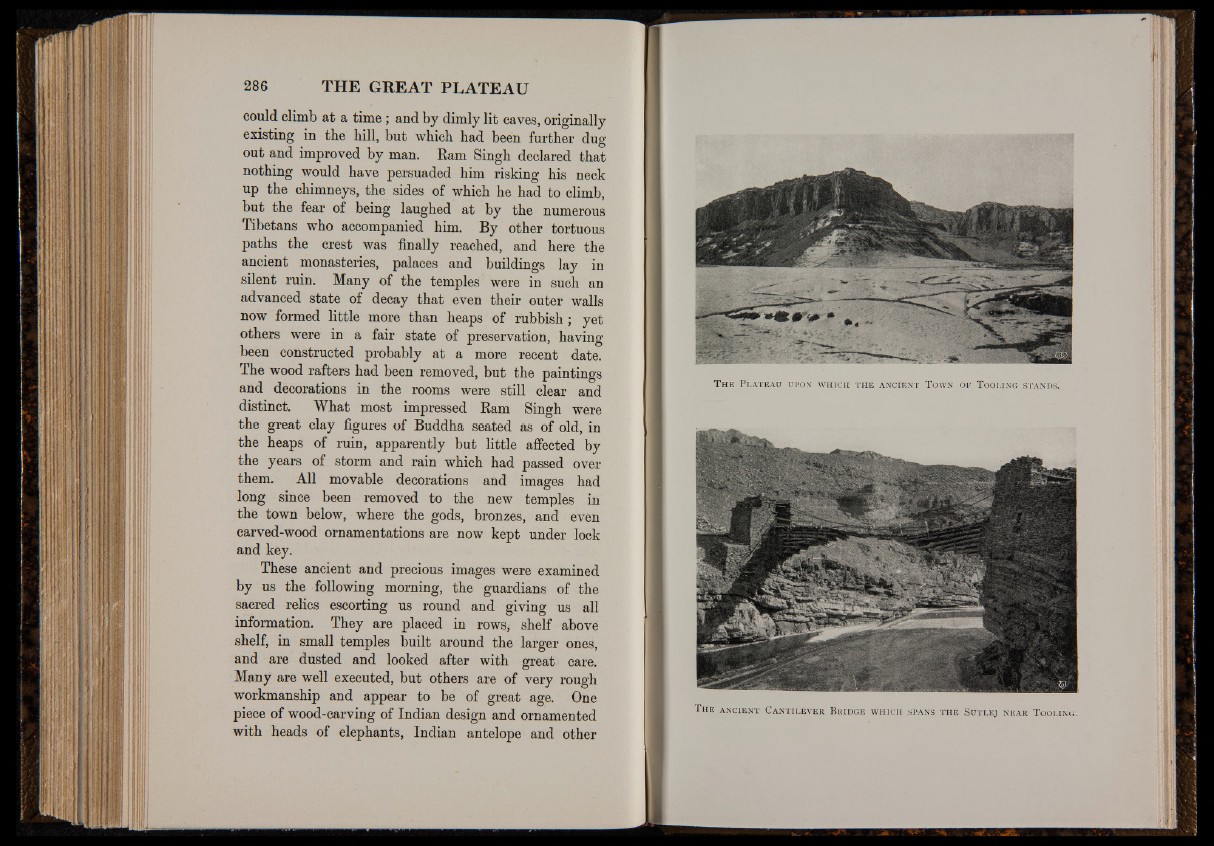
could climb at a time; and by dimly lit caves, originally
existing in the hill, but which had been further dug
out and improved by man. Ram Singh declared that
nothing would have persuaded him risking his neck
up the chimneys, the sides of which he had to climb,
but the fear of being laughed at by the numerous
Tibetans who accompanied him. By other tortuous
paths the crest was finally reached, and here the
ancient monasteries, palaces and buildings lay in
silent ruin. Many of the temples were in such an
advanced state of decay that even their outer walls
now formed little more than heaps of rubbish; yet
others were in a fair state of preservation, having
been constructed probably at a more recent date.
The wood rafters had been removed, but the paintings
and decorations in the rooms were still clear and
distinct. What most impressed Ram Singh were
the great clay figures of Buddha seated as of old, in
the heaps of ruin, apparently but little affected by
the years of storm and rain which had passed over
them. All movable decorations and images had
long since been removed to the new temples in
the town below, where the gods, bronzes, and even
carved-wood ornamentations are now kept under lock
and key.
These ancient and precious images were examined
by us the following morning, the guardians of the
sacred relics escorting us round and giving us all
information. They are placed in rows, shelf above
shelf, in small temples built around the larger ones,
and are dusted and looked after with great care.
Many are well executed, but others are of very rough
workmanship and appear to be of great age. One
piece of wood-carving of Indian design and ornamented
with heads of elephants, Indian antelope and other
T h e a n c ie n t C a n t il e v e r B r id g e w h ic h s pa n s t h e S u t l e j n e a r T o o l in g .